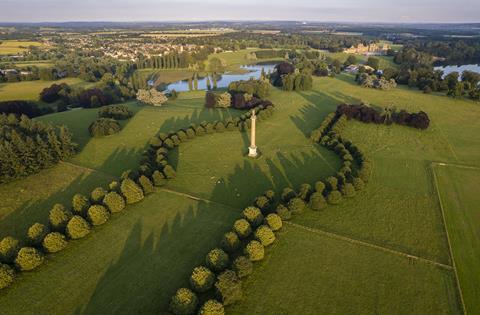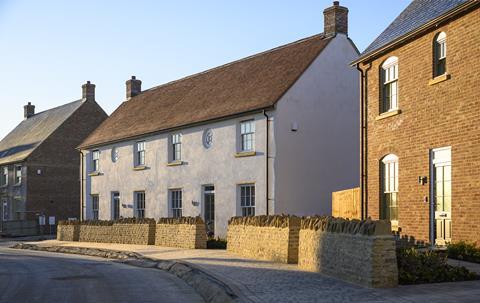∫√…´œ»…˙TV better requires innovation as well as some sensitive imitation ‚Äì our planning system should support this

What is beauty? And how does beauty manifest itself in new housing developments? These questions have been prominent in planning policy since the government’s creation of the in 2018.
Published in January 2020, the commission’s report led to revisions within the which place a new emphasis on aesthetics. “Beauty” is now included in the definition of sustainable development and features throughout the revised policy document.
It was a perceived absence of beauty in new housing that initiated this: a belief that development is too often driven by utility, convenience and developer profit, resulting in mediocre, bland, ubiquitous buildings. The underlying political driver is housing targets – enhanced quality, it is hoped, will encourage local support and thereby lead to enhanced quantity. As the then communities secretary, Robert Jenrick, said, new developments which meet with community approval are less likely to be resisted.

This premise was supported by which found that fewer than one in 10 UK residents felt new homes were built to a high standard of design and 77% felt cost was too often an excuse for bad design. And yet 63% believed new homes can be well designed without greater expense.
The inevitable problem with mandating for “beauty” is in defining it. Nothing is more subjective. Context is everything.
Motivation (which could be, for example, an architect’s desire to earn a fee or a nimby’s opposition to development) is questionable. It is notable that the term “beauty” is not defined in the glossary of the revised NPPF, leading to the suggestion that its application may be as flexible as is necessary to deliver on the ultimate goal of increasing housing numbers. This clearly runs the risk of diluting the intent of the policy wording.
Rightly or wrongly, tradition versus innovation lies at the heart of architectural aesthetics. Many traditionalists believe that if new developments were as picturesque and Instagram-friendly as existing towns and villages, they would be welcomed. Conversely, those who favour innovation believe that an adherence to the vernacular presents the risk of simply adding twee characteristics to dull boxes.
If the Georgians had indulged in pastiche, they argue, we would lack the architecture that some are so keen to imitate. Proponents of innovation are quick to point out that no fewer than 92% of residents of the UK’s most modern town, Milton Keynes, . The town is already host to 27 conservation areas!
>> Also read: How council planning departments reached crisis point
>> Also read: The anti-developers have won as government signals full retreat on planning
The government may currently be in limbo but at Blenheim Strategic Partners we fully support a commitment to enhance the place of design and beauty in the planning system, on the proviso that it ensures innovations in design are encouraged and recognised by decision-makers – not unduly stifled. The subjective nature of beauty needs to be recognised – beauty is more than imitation.
Our experience, however, is that craftsmanship, material use and imagination define good architecture, yet these terms were absent from the commission’s report. This suggests a reluctance to sacrifice economic efficiency for quality.
We strongly advocate for good design in new communities – for a host of reasons, which extend far beyond an enhanced likelihood of planning consent. But “beauty” (described by the Oxford English Dictionary as “a combination of qualities, such as shape, colour or form, that pleases the aesthetic senses, especially the sight”) is too narrow a concept for the role that good design can play.

A beautiful development is one that prioritises the natural environment, sustainable lifestyles, harmonious communities, accessibility and diversity. We work with the local vernacular because of its sustainable credentials and durability: not because we believe in imitation or pastiche, but because selecting the best from the past and complementing it with the best innovations is the essence of good design and design evolution.
Beauty is frequently present in innovation: there is as much beauty in our proposed Passivhaus scheme at Hill Rise in Woodstock, Oxfordshire, as in the homes constructed of local materials ever present in the local vernacular.
Knight Frank’s 2020 report , published in response to Living With Beauty and in anticipation of the changes to the NPPF, profiled new communities developed with quality as an explicit aim, of which Park View is one.
The case study praises Blenheim Estate Homes’ “design standards of the highest quality” which “complement and enhance the centuries-old legacy of the Blenheim Palace world heritage site”.
Legacy is the focus of Knight Frank’s appraisal, specifically the “genuine vested interest in the strength of both the local community and the local economy”, including affordable housing provision, local employment schemes and the early use of design codes to preserve quality on many levels.
Knight Frank‚Äôs depiction of Park View and its focus on legacy demonstrates that beauty is not skin-deep, and the ∫√…´œ»…˙TV Better, ∫√…´œ»…˙TV Beautiful Commission reaffirms this, stating that ‚Äúlegacy will define beauty long term‚Äù. As John Keats stated in , ‚Äúa thing of beauty is a joy for ever ‚Ķ it will never pass into nothingness‚Äù.
Our aspiration has been, and continues to be, to build the conservation areas of the future: developments whose beauty will endure not solely because of the materials used but because of the strength of the community and its desire to conserve the quality that exists on many levels. However, we believe that the agenda has moved on: beauty is still of fundamental importance, and this needs now to be overlaid with the need to address climate change and the impact of that on design.
Roger File is property director of Blenheim Estate and chief operating officer of Blenheim Strategic Partners
Postscript
Roger File is Property Director of and COO of .


























No comments yet